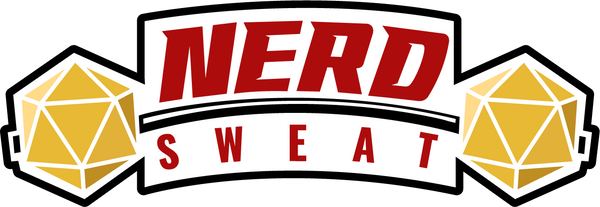
Running Epic, Multi-Group Events in a West Marches Campaign
One of the most exciting aspects of running a West Marches campaign—especially one as large as the Common Grounds Guild of Greyhawk—is the opportunity to host epic, multi-group events. With nearly 30 adventurers already signed up, we have the perfect setup for large-scale encounters where multiple parties contribute to a shared story. These events can bring the community together, create lasting in-game consequences, and make players feel like they are truly shaping the world of Greyhawk.
Here’s how we’re planning to organize multi-group events in our campaign, along with some examples, tools, and resources to help other Dungeon Masters do the same.
What Makes a Multi-Group Event?
A multi-group event is any scenario where multiple adventuring parties—playing in different sessions—work toward a shared objective. This could mean:
- Simultaneous play (several tables playing at once).
- Sequential play (one table’s choices affect the next group’s experience).
- Asynchronous play (actions taken across multiple weeks shape the event’s final outcome).
Types of Multi-Group Events in Greyhawk
1. Large-Scale Battles – Greyhawk is full of faction conflicts, from skirmishes between the Shield Lands and the Bandit Kingdoms to the sinister machinations of the Scarlet Brotherhood.
- Example: The adventurers must defend a border fortress from an orc horde, with different groups handling different parts of the battlefield. One party defends the walls, another sabotages enemy siege engines, while a third sneaks behind enemy lines to assassinate the warlord.
- Resource: Use Matt Colville’s "Strongholds & Followers" for mass combat rules or reference Battlesystem (TSR, 1985) for classic D&D war scenarios.
2. Coordinated Dungeon Crawls – A sprawling dungeon could have different groups tackling different sections, with their actions influencing each other.
- Example: The ruins of Castle Greyhawk contain three known entrances. One group clears out the surface ruins, another explores the flooded lower chambers, while a third investigates magical disturbances in the upper towers. Their discoveries determine what future groups encounter.
- Tool: Use Obsidian Portal to track which sections have been explored and what remains a mystery.
3. Timed Global Events – Some crises affect the entire campaign world, and all adventurers contribute to resolving them.
- Example: A plague is spreading through the Free City of Greyhawk, and adventurers must simultaneously investigate different sources—the sewers, a secret cult, and a merchant caravan suspected of spreading the disease.
- Mechanic: Set a real-world deadline for players to resolve the problem, with consequences if they fail.
4. Faction Wars & Political Intrigue – In a world as politically charged as Greyhawk, different adventuring parties may align with rival factions.
- Example: The Knights of the Hart need proof that an ambitious noble is dealing with the Horned Society. One party gathers evidence, while another secures political allies before a major council meeting.
How to Organize Multi-Group Play
1. Use a Central Communication Hub
With multiple groups shaping the world, clear communication is key. We’re using:
- Discord for ongoing discussions and updates.
- A shared campaign log (Google Docs or Obsidian Portal) to track major events.
- A bounty board system where new missions emerge based on previous player actions.
2. Assign Dungeon Masters to Oversee the Event
Coordinating multiple tables requires teamwork. Our approach:
- One lead DM outlines the big-picture event.
- Other DMs take charge of individual tables, ensuring consistency in the world.
- A session recap board helps keep track of what each group accomplished.
3. Use Timekeeping Mechanics
Since different groups play at different times, we use “Living World” rules to track time progression.
- Each week represents a set amount of in-game time (e.g., one session = one week in Greyhawk).
- If one group takes too long, another might face the consequences of their delay (such as an enemy army reinforcing).
4. Reward Collaboration
Multi-group events should reward teamwork. Some ideas:
- Special titles or ranks in factions for adventurers who participate.
- Unique magic items tied to the event’s outcome (e.g., a sword forged from the remains of a slain dragon).
- Persistent world changes, like a new fortress established or a ruined village rebuilt.
Lessons from Other Organized Play Campaigns
The idea of multi-group events isn’t new—it’s been a staple of D&D Adventurers League and past Living Greyhawk campaigns. Here’s what we’ve learned from them:
- The Living Greyhawk Gazetteer (2000) was a great example of shared storytelling, where different player groups could influence the fate of various regions.
- Adventurers League Epics show how timed, large-scale encounters can work across multiple tables.
- The West Marches Campaign Format (by Ben Robbins) is a great resource for handling player-driven exploration and shared world consequences.
The Future of Multi-Group Events in the Common Ground Guild of Greyhawk
For our campaign at Common Ground Games, we’re planning several Guild-Wide Events throughout the year. The first major event is already in the works and will be hosted in April as part of Common Ground Games Extra Life event.
Final Thoughts
Multi-group events are a game-changer for any West Marches campaign, especially in a shared world like Greyhawk. They allow for epic storytelling, encourage community engagement, and give players a real sense of impact.
If you’re running a large campaign, consider hosting a world-changing event—you’ll be amazed at how players come together to shape the adventure!
Want to Join the Adventure?
If you’re in Dallas, TX, and want to be part of the Common Grounds Guild of Greyhawk, stop by Common Ground Games or join our Discord server for updates. The next Guild Day is coming soon, and you won’t want to miss it!
What multi-group event would you love to see in Greyhawk? Let us know in the comments!
